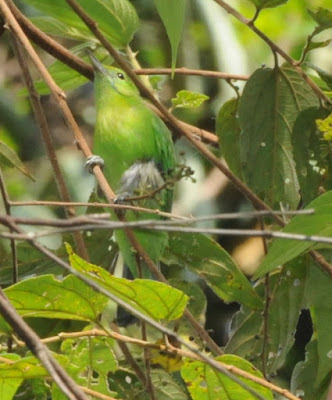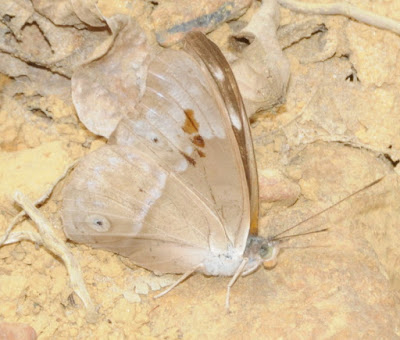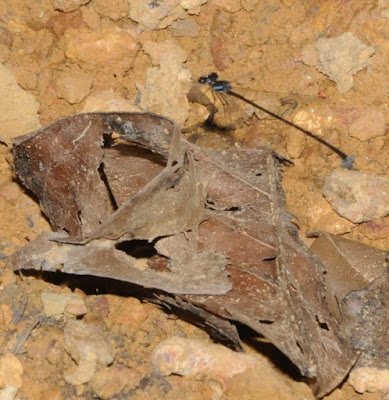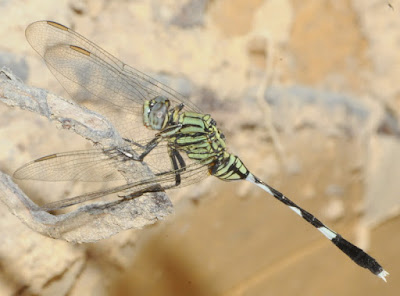Our trip to West Malaysia began in Penang, a city famous for its food and colonial architecture - but our time there is not really a fit subject for a natural history blog. From Penang, though, we took a bus to Taiping on the Perak mainland, where we met up with my birding buddy Bing Lim. While Eileen visited and old classmate and learned the intricacies of mah jongg, Bing, Lim Kim Chye and I headed for the forest.
On our first day (May 28, 2011), we visited the Pondok Tanjung Forest Reserve some 19 kilometers north of town, characterized in 2004 by Birdlife International as "probably the largest remaining swamp forest in northern Peninsular Malaysia". Unfortunately, that description may no longer be accurate.
We still found flowers growing, including this Ixora sp. - though whether it is native to the area or a garden escapee I cannot tell. Ixoras are common garden plants in the tropics, though the cultivated ones usually have red flowers instead of yellow.
We found delicate little mushrooms like these sprouting from the edge of fallen logs (though you might notice that the edge, in this case, is clearly the result of a saw or an axe).
We certainly found birds, including this female Lesser Green Leafbird (Chloropsis cyanopogon). Female leafbirds can be difficult to identify, but notice the absence of an eye-ring and the yellowish tinge on the underparts of this one, both field marks of the Lesser Green. Bing has posted the results of our birding efforts (as all of us here should do, though I confess I am rather remiss about it) on bird i-witness Malaysia.
As often happens, though, the butterflies and dragonflies were a lot more camera-cooperative than the birds. Here is one of the butterflies: a Purple Duke (Eulacera osteria kumana).
This one is a Grey Sailor (Neptis leucoporos), one of a confusingly similar group of species. I have seen the names of these butterflies given as both "sailor" and "sailer", but I am assuming that the former is correct - partly on the grounds that some very similar species, with orange-brown rather than white markings, are called "lascars". "Lascar" is an old word for a sailor from India and parts east. I am hoping that the butterfly names are not based on the difference in their stripe colours, but I suspect that they are.
And here is one of my favorite Malaysian butterflies, the gorgeous Five Bar Swordtail (Pathysa antiphates itamputi).
On to the Odonata. I believe that this damselfly is Indocnemis orang, a large species of forest streams, but it could be something similar.
The dragonflies I photographed were all common ones: Neurothemis fluctuans...
Orthetrum testaceum...
... and one I find myself photographing very often, Orthetrum sabina.
Notice how this one picks up a couple of interesting reflections from my flash as it tilts its head towards me!
Unfortunately, all is not well in Pondok Tanjung. One would think that piles of freshly-cut logs should not be a feature of a forest reserve, but apparently logging and clearing have been going on here since at least 2008 (including clearing 1400 ha. for a goat farm) despite repeated protests from the Perak Environmental Association. More than half the reserve has already disappeared.
The result is, at least along the main (logging) road into the reserve, a depressing mess amidst what should be untrammeled tropical beauty and richness. It's too bad.



















No comments:
Post a Comment